Table of Contents: Best Entryway Light Fixtures
An entryway isn’t just about stepping into someone’s space—it’s where the story begins. It’s the first glimpse of the warmth that waits inside, the point where a house starts to feel like home.
The thing is, a grand entrance doesn’t just rely on impressive architecture; it comes to life with the right lighting, casting a welcoming glimmer that invites guests in and offers a sense of security.
Let’s explore how entryway light fixtures can turn even the simplest doorway into something magical, from the path leading up to the front door to the architectural details you want to showcase.
The Importance of Entryway Lighting
As we mentioned above, an entryway is generally the first part of your home or property that your guests will encounter, making it a crucial focal point. Proper entryway lighting does more than just guide people to your door—it establishes the mood, highlights architectural features, and adds a layer of security.
Here’s what great entryway lighting achieves:
- Curb Appeal: A well-lit entryway enhances the exterior beauty of your home, making it stand out at night. The strategic placement of entryway light fixtures can highlight architectural features and landscaping, creating a polished, eye-catching appearance that adds value and charm.
- Safety and Security: Illuminating pathways and entry doors helps prevent accidents and deters potential intruders. With proper lighting, dark corners are eliminated, giving you peace of mind and ensuring that every step is visible, even in the darkest hours.
- Functionality: Effective landscape lighting makes it easier for you and your guests to navigate the space, especially in areas that may have steps or uneven ground. It ensures that entry points are clear and accessible, providing both convenience and confidence as you move through your outdoor spaces.
Key Considerations for Entryway Lighting
Just as you carefully design the entrance to your home, entryway lights deserve the same thoughtful attention. When you’re illuminating your entryway, keep these factors in mind:
- Style: The entryway light fixtures you choose should complement the overall style of your home. Traditional homes may benefit from classic lantern-style lighting, while modern homes can use sleek, minimalistic fixtures.
- Balance: Avoid overpowering your entrance with too much light. Instead, aim for a balanced look by layering different types of lights that work together to create depth and warmth.
- Energy Efficiency: LED lighting is the gold standard for outdoor lighting, offering long-lasting illumination with minimal energy use. It’s both eco-friendly and cost-effective.
- Weatherproofing: Entryway lighting must be durable enough to withstand the elements. Look for entryway light fixtures rated for outdoor use, and consider materials like brass, copper, and aluminum, all of which are corrosion-resistant. However, brass stands out for its superior durability. Above all, make sure your chosen fixtures feature weather-resistant finishes to effectively handle rain, snow, and UV exposure. For more information on these materials and product recommendations, check out our blog or explore our selection of lighting options.
- Fixture Placement: Positioning entryway light fixtures correctly is crucial for achieving the desired effect. Use lighting to highlight the architectural features of your home and create a pathway that is easy to navigate.
Now let’s explore some of the best entryway lighting options and techniques to create an unforgettable grand entrance.
Best Entryway Light Fixture Options
Here are some ways you can create a stunning and functional entryway:
- Path Lights: Path lights are a staple of landscape lighting, especially entryways. Not only do they guide visitors safely to the front door, but they also highlight your landscape features, from flowers to stone pathways. Place path lights along both sides of the walkway to the entryway, spaced evenly to create a soft, even glow. Avoid placing them too close together, which can create a “runway” effect. Go with low-voltage LED path lights for soft, ambient lighting and minimal energy usage.
- Step Lights: If your entryway includes steps, lighting them is essential for safety. Step lights provide soft, unobtrusive illumination that makes it easier to see each step. These fixtures can be installed into the risers of your steps or along the sides of staircases, casting light down onto each tread. Look for LED step lights that are recessed or flush-mounted for a sleek, modern look that doesn’t detract from the aesthetics of your home.
- Wall Sconces: Wall sconces on either side of your front door can create a welcoming and symmetrical look. These entryway lights add character and charm while providing adequate illumination for your front entryway. For optimal visual impact, place wall sconces at about eye level on both sides of the door. LED wall sconces are ideal, especially those with a dimming option to control brightness.
- Overhead Pendant Lighting: For homes with grand entryways that feature porches or covered walkways, an overhead pendant light can create a stunning focal point. This type of entryway lighting adds drama and elegance while providing ample light for guests arriving at your door. Hang the pendant light in the center of the entryway or above the door. Make sure it’s installed high enough to allow for easy passage underneath without obstruction. A statement pendant light in a metallic finish or with geometric detailing can elevate the space, while an LED fixture ensures energy efficiency.
- Uplighting and Downlighting: To truly make an entrance stand out, consider using uplighting and downlighting techniques that cast light onto your home’s architectural features or surrounding landscape. Position uplights at the base of columns, trees, or other tall structures to highlight vertical lines and create a grandiose look. Downlights can be placed under roof eaves or on walls to softly wash the area with light. Low-voltage LED uplights or downlights in warm white tones create a welcoming atmosphere without overwhelming the space.
- Accent Lighting: Accent lighting can be used to highlight specific features around your entryway, such as a beautiful front door, unique landscaping, or a water feature. Position accent lights to draw attention to the key design elements you want to showcase. For example, a well-placed spotlight on a textured wall can add depth and intrigue. LED spotlights or narrow beam lights are perfect for highlighting architectural or landscape features. Choose a warm, soft light to maintain a cozy and inviting atmosphere.
Techniques for Lighting a Grand Entrance
In addition to choosing the right entryway light fixtures, it’s important to use strategic entryway lighting ideas and techniques to create a dramatic and functional entrance. Here are a few tips to elevate your landscape lighting:
- Layering Lights: One of the most important aspects of landscape lighting design is layering. Instead of relying on a single light source, use multiple layers of light to add dimension and interest. Combine path lights, sconces, uplights, and accent lights to create a balanced, cohesive look.
- Highlighting Focal Points: Whether it’s the front door, a grand archway, or a beautiful garden, use entryway lighting to highlight key focal points around your entryway. This creates a sense of drama and ensures that the most important elements of your home stand out.
- Creating Shadows and Silhouettes: Play with shadows and silhouettes to add a dynamic, artistic touch to your entryway. Uplighting trees or large plants can create interesting shadows on the walls of your home, while backlighting architectural features can create striking silhouettes.
- Consider Color Temperature: For a warm and inviting feel, choose entryway lighting with a color temperature between 2700K and 3000K. This soft, golden light mimics the glow of candlelight, creating a cozy atmosphere. Cooler color temperatures (4000K or above) can be used to achieve a more modern, crisp look, but may feel less inviting.
- Use Timers and Smart Controls: With smart lighting systems, you can automate your lights to turn on at sunset and off at sunrise or control them remotely using your smartphone. The FX Luminaire LSAT 300W Matte Grey Controller not only reduces potential WiFi coverage issues for larger projects but also offers customizable scheduling and programming options for added convenience. With the corresponding app, you can effortlessly manage your entryway lighting right from your phone, ensuring your home remains beautifully lit and secure at all times.
Entryway Lighting, Done Right
Lighting your entryway is not just about providing illumination—it’s about creating a welcoming, safe, and beautiful space that makes a lasting impression. By choosing the right entryway light fixtures, placement, and techniques, you can design a grand entrance that enhances both the functionality and aesthetics of your home.
Whether you’re highlighting architectural details, adding security, or simply creating a warm welcome for guests, entryway lighting is the key to transforming the path into your home into something truly grand.
Entryway Lighting FAQs
What size light fixture for the entryway?
Homes come in all shapes and sizes, and so do entryways. When determining how to light your home entryway and what size light fixture to get, there is a good general rule of thumb to follow. Add the length and width of your entryway in feet to get the ideal diameter or width of the entryway light fixture you need, in inches. So, for example, if you have a 20-foot by 15 foot entryway, you would want to get a 35-inch diameter entryway light fixture.
How to hang entryway light fixtures?
Once you’ve settled on the best entryway light fixtures for your space, you’ll want to know how to install them. The process is fairly straightforward, requiring basic electrical knowledge and tools. First, shut off the circuit breaker and make sure no electricity is flowing by using a voltage tester. Remove the old light fixture, if there is one. Secure the new mounting bracket to the electrical box. Match the wires by color and secure them using wire nuts, taping the connections. Mount the entryway light fixture to the bracket, ensuring it is securely in place. Add bulbs and shades, as needed, and turn the power back on.
How much wattage for an entryway light?
Once your entryway light is installed, it’s important to know what kind of wattage to use for proper lighting. You can calculate the ideal entryway lighting wattage by taking the square footage of your entryway and multiplying it by 1.5. So, if your entryway measures 15 feet by 20 feet, you would need 450 watts of lighting power. On average, home entryway lights require around 150 watts of power. If you’re worried about brightness in your entryway in general, you can always use a dimmer switch to allow for flexibility depending on mood or time of day.
Join our Insider list and check out the different landscape lighting options that we have to offer.
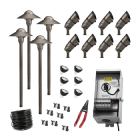 Easy-Install Kits
Easy-Install Kits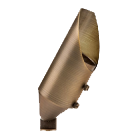 Uplights
Uplights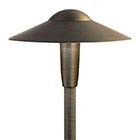 Path & Walkway Lights
Path & Walkway Lights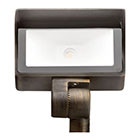 Flood & Wall Wash Lights
Flood & Wall Wash Lights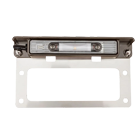 Hardscape Lights
Hardscape Lights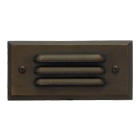 Step Lights
Step Lights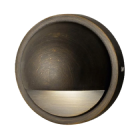 Outdoor Deck Lights
Outdoor Deck Lights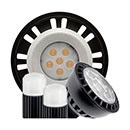 Outdoor Bulbs
Outdoor Bulbs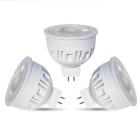 RGBW Color Lights
RGBW Color Lights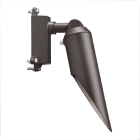 Downlights
Downlights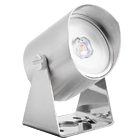 Underwater Lights
Underwater Lights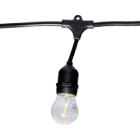 Bistro String Lights
Bistro String Lights Holiday Decorations
Holiday Decorations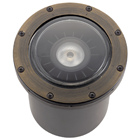 In-Ground Well Lights
In-Ground Well Lights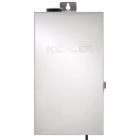 Transformers
Transformers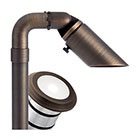 Accessories
Accessories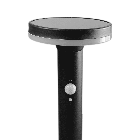 Solar Lights & Portables
Solar Lights & Portables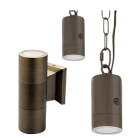 Specialty Lights
Specialty Lights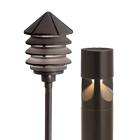 Bollard Lights
Bollard Lights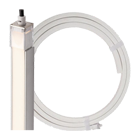 Tape Lights
Tape Lights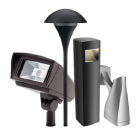 120V Landscape Lighting
120V Landscape Lighting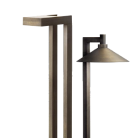 Dark Sky Approved Lights
Dark Sky Approved Lights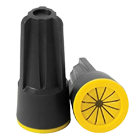 Connectors
Connectors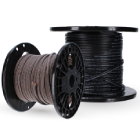 Wire & Cable
Wire & Cable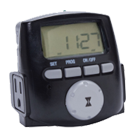 Timers & Control Devices
Timers & Control Devices

